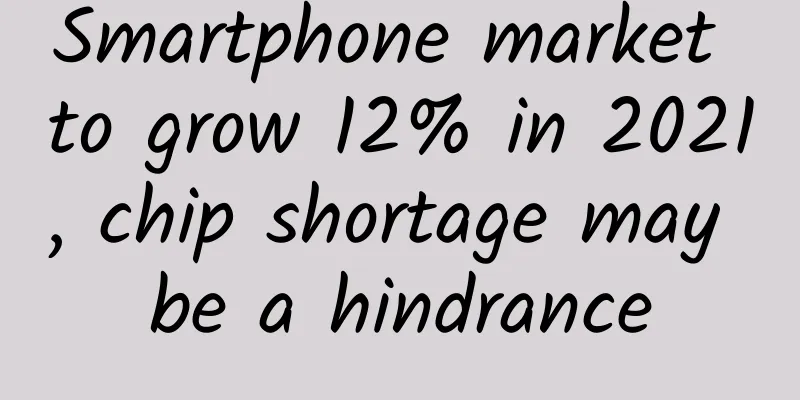Smartphone market to grow 12% in 2021, chip shortage may be a hindrance

|
The latest forecast from research firm Canalys indicates that despite the supply pressure, the global smartphone market will still grow by 12% in 2021, with shipments reaching 1.4 billion units. This represents a strong recovery from 2020, when smartphone shipments fell by 7% due to major market restrictions caused by the global COVID-19 pandemic. At the same time, Canalys also pointed out that as vaccines continue to be promoted around the world and the epidemic is suppressed, component supply will become a new bottleneck in the smartphone industry. Canalys research manager Ben Stanton said, "The resilience of the smartphone industry is quite incredible." Among them, 5G mobile phones have a strong momentum, accounting for 37% of global shipments in the first quarter, and are expected to account for 43% (610 million units) for the whole year. This will be driven by fierce price competition among suppliers, many of which sacrifice other features (such as display or power) to accommodate 5G in the cheapest possible devices. By the end of this year, 32% of all 5G device shipments will cost less than $300. However, component supply bottlenecks will limit the growth potential of smartphone shipments this year. Stanton said "delays are increasing"; shortages of microchips and other supplies have hampered the tech industry, and backlogs continue to grow, affecting every brand. Due to the chip shortage, vendors will prioritize smartphone distribution by region, turning to lucrative developed markets such as China, the United States, and Western Europe at the expense of Latin America and Africa. But even in these more profitable regions, shipments will be limited. As a result, retailers will have to drive more sales through carriers and fewer through the open market. This series of events could pave the way for more rival smartphone brands to gain sales in channels where the major players cannot meet demand. Another angle is pricing. Nicole Peng, vice president of mobile at Canalys, noted that as prices of key components such as chipsets and memory rise, smartphone vendors must decide whether to bear these costs themselves or pass them on to consumers. Significant constraints around LTE chipsets will pose challenges to the low-end market, where customers are particularly sensitive to price. Smartphone vendors must focus on improving their operational efficiency while reducing margin expectations for low-end product portfolios if constraints persist, or risk losing market share to competitors. While the pandemic may be fading in some ways, its effects will continue to be felt across society and the smartphone market. For more details, please see the official announcement. This article is reproduced from OSCHINA Title of this article: Smartphone market to grow 12% in 2021, chip shortage may be an obstacle Article URL: https://www.oschina.net/news/146147/smartphone-shipments-2021 |
>>: A comprehensive B-side design guide: tree selection
Recommend
[2014 WOT Shenzhen Station Lecturer Interview] Xie Zhen: Resource management makes the game more brilliant
From November 21 to 22, 2014, the 2014 WOT Global...
Apple's Jonathan Ive: Apple Watch will always be beautiful
Apple designers Jonathan Ive and Marc Newson spok...
Where does blood come from and where does it go?
"The heart pushes blood to circulate through...
China Association of Automobile Manufacturers: Production and sales of automobile industry in October 2024
According to the analysis of the China Associatio...
This ingredient should not be in food! It is endangering the health of billions of people
Fat is a substance that people love and hate. We ...
Who is the mysterious DST? How much money did it cash out from JD.com?
[[132219]] Yuri Milner is such a low-key and toug...
Tablet market is a mixed bag: iPad downturn and China's rise
Although Apple's iPad sales have declined for ...
What do the Tik Tok short video tags mean? How to quickly tag on Tik Tok?
With the explosive popularity of short videos on ...
How are water droplets formed? The principle behind droplet formation is not simple.
The author or source of this article or its origi...
The live broadcast can’t be released?
You may be wondering: What can conversion goals d...
The mini program is launched amazingly, but why do I think it is bad?
In the early morning of January 9, the WeChat min...
When learning to cook, the beasts are not afraid of burning the bottom of the pot, but are afraid of scalding themselves! Get these first aid skills
Starting from September this year, the Ministry o...
APP advertising promotion monetization methodology!
Whether playing King of Glory, reading articles o...
The Hengduan Mountains glaciers are precious because they are rare.
01 What is a glacier? Glaciers are a type of land...
Are black pepper and white pepper two different types of pepper? — How many misunderstandings do you have about pepper?
Are black pepper and white pepper two different t...







![[Smart Farmers] Can this high-resistant starch rice allow diabetic patients to eat as much as they want?](/upload/images/67f212fe65ed2.webp)

